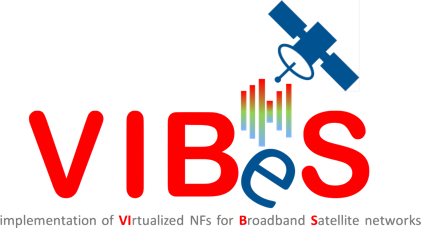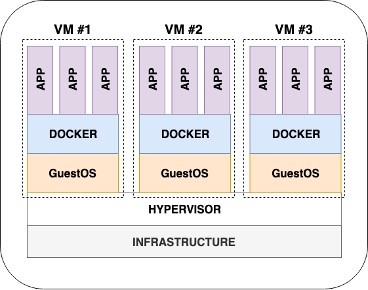
-
StatusCompleted
-
Status date2020-08-20
-
Activity Code6A.054
The high-level project objective was to provide a tailored architectural and technological solution for performance optimization of end-to-end IP-based services, when a satellite component is present in the communication path. Target scenarios are compliant to upcoming 5G use-cases.
VIBeS project outcomes allow to review the role of Performance Enhancing Proxy (PEP) agents, redesigned as a set of Virtual Network Functions, namely vPEP. In this innovative perspective, the vPEP is following a top-down orchestration approach to flexibly satisfy the requirements of each application, on a "slice" basis. The proposed approach allowed to pursue the following technical objectives:
- Rapid service innovation and then modifications through software-based deployment of functions, in order to satisfy possible evolving requirements;
- Improving operational efficiency through process and procedure automation, even allowing the possibility to transfer a PEP context to really guarantee mobility;
- Greater flexibility on applying flow-specific rules, implementing methods to discriminate traffic by type, pattern, and performance requirements.
Project objectives were verified through a Proof of Concept (PoC) real-time platform, reproducing a sub-set of significant converged 5G satellite-terrestrial scenarios:
- Satellite backhauling for traditional Web browsing from LTE/5G mobile users;
- Large-scale Web streaming services for fixed (i.e. ADSL) and mobile (i.e. LTE) users;
- Distributed M2M communications.
The main challenge was to provide the basement technology to launch an evolved view of satellite role in current and future 5G scenarios, enabling flexibility and improved performance, through the joint exploitation of virtualization paradigms and recent Web technologies. This represented a very ambitious goal since satellite platforms were traditionally designed as stand-alone, not interoperable and application-driven systems. Challenges covers different areas:
- architecture (i.e., distributed orchestration of NFV, SFC, pairing, hybrid network slicing);
- performance (i.e., reduction of latency for interactive applications, efficient combined use of multiple links - offload, effective caching);
- validation (implementation of a flexible and fully representative of the target 5G network/scenarios PoC testbed).
The VIBeS project aimed to ride the 5G-related transformation to review the role of satellite in supporting the expansion of 5G services to vertical industries. 5G envisages business by controlling and customizing needed resources, either satellite or terrestrial, through a central orchestration. The developed vPEP is compliant with this view. Thus, the PoC testbed can support ESA Member State industries to design, develop and validate solutions and products in the 5G framework enabling the use of a satellite component as an element that improves the product. The developed vPEP and the overall PoC testbed are expected to support the integration with terrestrial components endorsing satellite technology with documented performance.
In addition, the availability of a satellite-enabled 5G testbed can potentially open the way to standardization activities.
The resulting solution is expected to enable benefits provided by recent Web technology in the following areas:
- Support zero latency in 5G systems leveraging modern protocol suitable for the web (i.e. QUIC protocol);
- Optimal utilization of available resources (i.e. offloading, failover, switchover);
- Data transfer optimization through new rate-control mechanisms (TCP Wave);
- Efficient exploitation of simultaneous links (Multi Path techniques such as evolutions of MP-TCP);
- Introduction of a traffic aggregation approach leveraging traffic classification and supported by the proposed QUIC-tunnel technology;
- Adaptive bitrate streaming (i.e. DASH and WebRTC).
The vPEP envisages a synergic combination of the container-based approach for virtualization and flexible computing. The overall architecture is based on a distributed, large-scale deployment of clusters of containers, whose management and orchestration are delegated to an ETSI NFV MANO. The dynamic establishment of network services is achieved by an orchestrator capable of deploying VNFs in shared hosting infrastructures and combining them with other services in order to meet the application needs.
SFC model is applied to manage and configure the logic order of VNF on the network path, defined by the operator using control plane mechanisms. For the scope, a two-level orchestration is provided I) to define the suitable VNF and II) to allocate physical and virtual resources and then to deploy the SFC. The most disruptive Web technologies are included as VNFs.
Terrestrial and satellite network emulators are provided to support different network and use-case configurations, with the compelling enabling of a hybrid multi-link backhauling. All these functionalities are reproduced and implemented in a PoC testbed, enabling performance assessment in the frame of evolved 5G services.

VIBeS project addressed a system architecture where vPEP is integrated in a converged satellite-terrestrial system. The figure below depicts the general deployment model tailored to reproduce target 5G services and architectures in a PoC testbed.

VIBeS testbed can be split into four NFV Infrastructure Points of Presence (NFVI-PoP) with dedicated hardware (network, computing and storage resources).
The vPEP-PoP (POP1) hosts a chain of orchestrated VNFs to improve target services provision over satellite-integrated communication scenarios. This component is under control of a Satellite Virtual Service Operator (SVSO).
The Satellite Baseband Infrastructure-PoP (POP2) provides the emulated physical satellite infrastructure for forward and return links. This component includes all the non-virtualized elements under the control of a Satellite Network Operator (SNO), as well as emulation of terrestrial links.
The terrestrial network PoP is composed of two macro-blocks: (1) a vEPC for mobile access through 4G radio fronthaul (POP3); (2) a core network managing connections with public Internet or local IP services (POP4). The whole testbed network resources and POPs are managed by a centralized ETSI-MANO custom orchestrator based on OpenBaton.
The project duration was 24 months (KO March 14th 2018) plus 12 months of availability of the testbed at contractor premises. The work flow was developed through three main not overlapping WP lines: WP1000 (Internet performance over satellite and Architecture), WP2000 (VNF-PEP testbed), WP3000 (Demonstration and results exploitation). Four milestones: Baseline Design Review (BDR, KO+6), Critical Design Review (CDR, KO+12), Preliminary Performance Review (PPR, KO+18), Final Review (FR, KO+24).

The activities planned in the first 24 months were successfully concluded. The test bed is ready for use.






